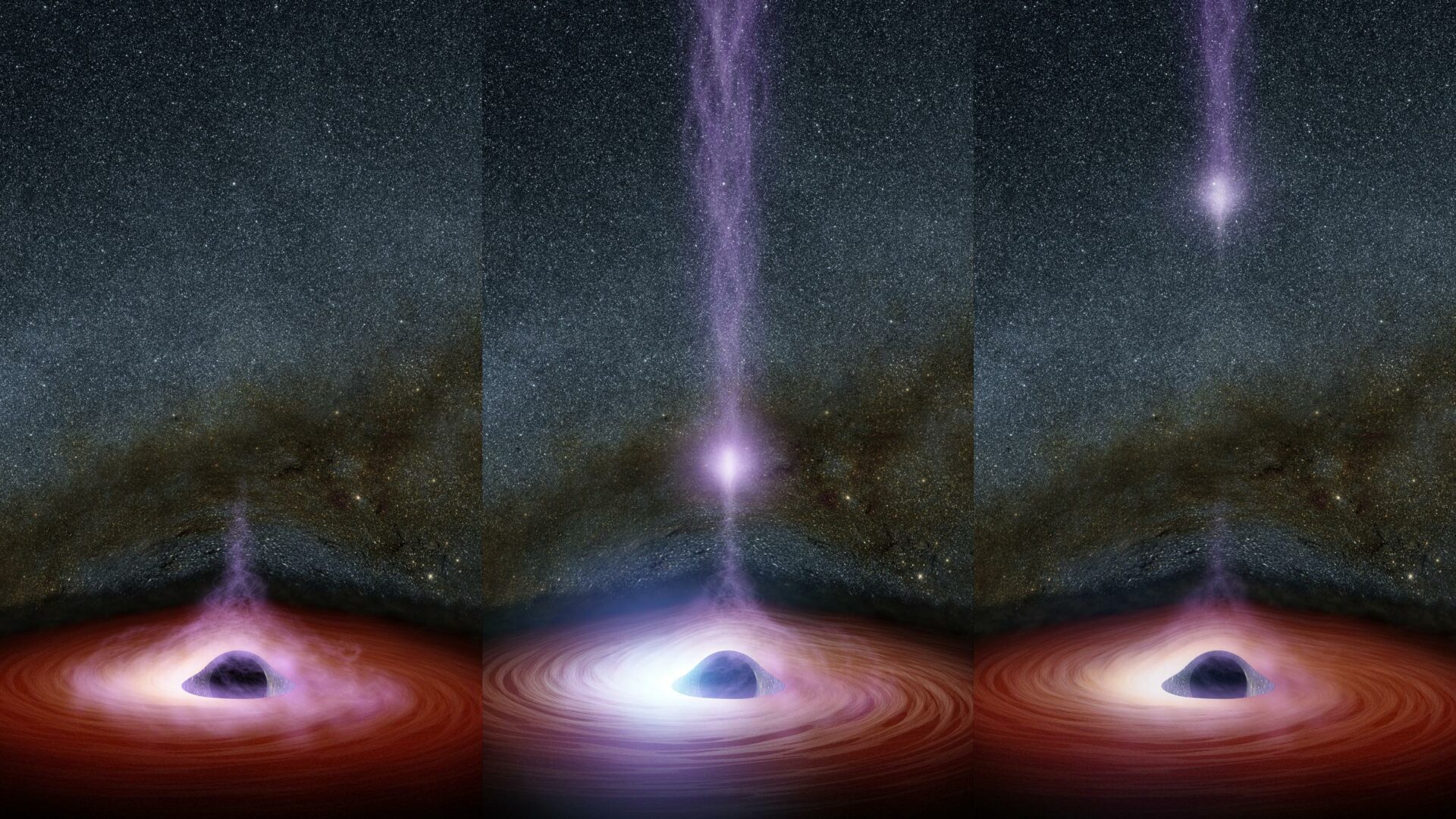Black holes have such a monstrous gravitational pull that nothing can escape from their “embrace”, not even light. However, new observations from NASA’s Swift and Nuclear Spectroscopic Telescope Array (NuSTAR) research missions have detected a giant eruption of X-ray light emanating from the center of a supermassive black hole located in the constellation Pegasus, about 324 million light-years away. The obtained data prompted researchers to ask: “Why do black holes flare up?”

Images of the black hole, known as Markarian 335, or Mrk 335, show that when a huge amount of energetic particles accumulate in the corona around the black hole, they are abruptly ejected, causing a flash of X-ray light.
“This is the first time we have been able to link the corona launch to an outbreak. This will help us understand how supermassive black holes power some of the brightest objects in the universe. Although black holes do not emit light, they are often accompanied by an ambient shining disk, which is a cluster of particles,” explained Dan Wilkins from St. Mary’s University in Halifax.
The corona moves amazingly fast. In the Mrk 335, it moved at a speed of 20% of light. Describing the process of X-ray emission from Mrk 335, Wilkins explained: “The corona first gathered inside, and then shot the particles up like a jet.” When this happens and the corona is launched in our direction, its light becomes brighter as a result of an effect called relativistic Doppler amplification.
Earlier we talked about “multicolored” black holes.
According to Nature
Follow us on Twitter to get the most interesting space news in time
https://twitter.com/ust_magazine
